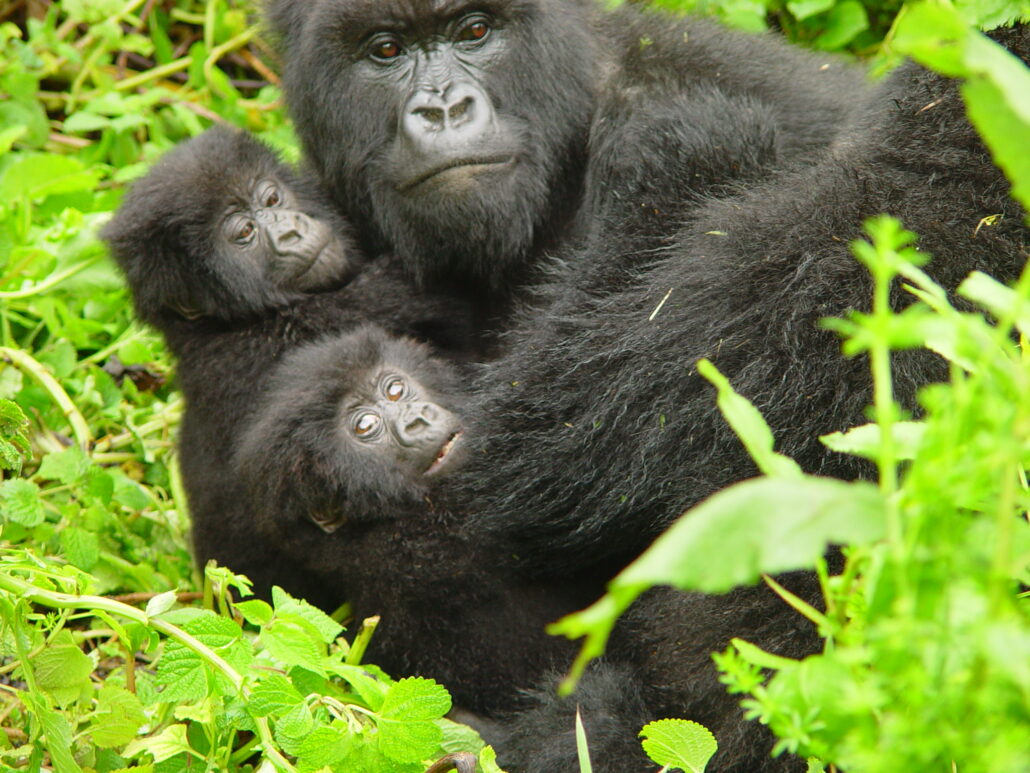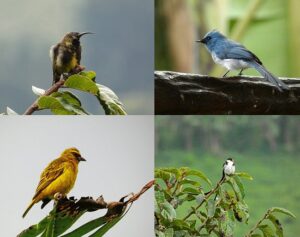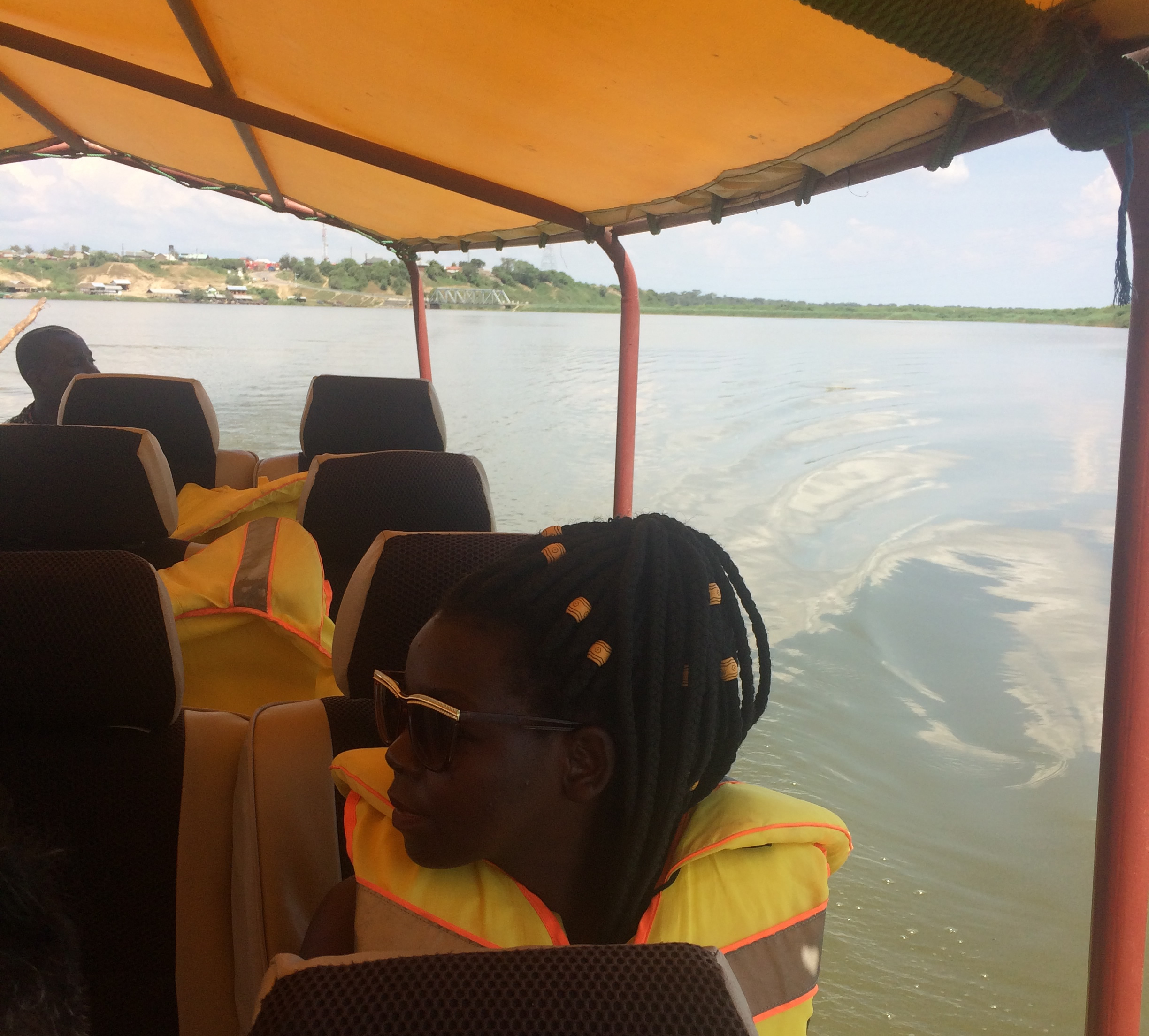Attractions(What To See) In Bwindi Impenetrable National Park
The top sights in Bwindi Impenetrable National Park include: Mountains Gorillas, Other primates, Waterfalls, Batwa Pigmies, Birds & Fauna
Attractions(What To See) In Bwindi Impenetrable National Park: The park is part of Uganda National Park, and a UNESCO world heritage site, and has several attractions, that many travel adventures would love to catch sight of, and here below are the 5 top most things to spot when visiting the park
Mountain Gorillas In Bwindi Impenetrable National Park-

The type of Gorilla specie found in Bwindi Impenetrable Forest are the endangered Mountain Gorillas, that inhabit Bwindi Impenetrable National Park. Bwindi forest has approximately 480 mountain gorillas, out of which 19 gorilla family groups ave been habituated for Gorilla trekking safaris in Uganda. Mountain gorillas in Bwindi National Park are protected in 4 sectors of Buhoma, Rhujia, Rushaga and Nkuringo. The gorilla individuals are progressively adding due to the prominent conservation efforts, hence increasing the number of gorilla families, namely: Rushaga sector has Nsonji, Mishaya, Bweza, Kahunjye, Muchunguzi & Bikyinji gorilla groups, Nkuringo Gorilla sector has, Bishaho, Nkuringo, & Christmas gorilla family groups, Ruhijah Gorilla sector has Bitukura, Kyaguriro, Mikizo & Oruzogo Gorilla families groups and Buhoma Gorilla sector has Rushegura, mubare, Habinyanja & Katwe Gorilla groups
Birds- Attractions(What To See) In Bwindi

Besides Gorilla trekking for which Bwindi Impenetrable National Park, is famous. The park has also been listed among Africa’s best birding destinations .Bird enthusiasts who would love to sight forest birds, and the endemic Albertine Rift bird species, Bwindi Impenetrable National Park awaits to be visited. The Northern section of Bwindi Impenetrable forest protects 76 out of 144 Congo Biome species of Birds, 66 out of 86 Afro tropical biome species and 23 over 24 of Albertine Rift Endemics can all be seen in Bwindi Impenetrable Forest. The numerous kinds of birds to keep on eyes on include Handsome Francoline, White-tailes Blue Flycather, , Red-headed Bluebill, Chapin’s Flycatcher, Shelley’s Crimson wing, Rwenzori Nightjar, Short tailed Warbler, Blue headed Sunbird, African blue Flycather, Common Bulbul among others
Primates and Wildlife Species
Bwindi Impenetrable Forest shelters 120 species of mammals, out of which 10 are primate species including the common Chimpanzees Black & White colobus Monkeys, Red tailed monkeys, Olive Baboons, Blue Monkeys, Grey checked Mangabeys,Pottos, Needle-clawed bushbaby. Yet the forest still contains 27 species of frogs and 220 butterfly species. Non other than the Elephants of the Big 5 are found South of the Forest, though very rare to spot. Other animals include bushbucks, duikers and antelops.
Flora
Bwindi Impenetrable National Park, is actually the best florist destination to visit. The primary Afro montane forest in both Low and High Altitudes are also exist. The park also encompasses about 220 species of trees, covering at least 50% of the trees in Uganda. Besides, over 1000 flowering plants & 100 fern species also form up the forest.
Hiking Trails
Hiking Trails area also an important part of Bwindi Impenetrable, because they lead to several sections of the park including attractions, during the time when tey are being used. The hiking trails in Bwindi Impenetrable forest unveils many hidden mysteries during any hiking or nature walk experiences.
The hiking trails in Bwindi include: River Ivi trail, Waterfall trail. Habinyanja trail, Kashasha trail, Bamboo trail, and Muzabajiro trail.
The Batwa Pygmies
The Batwa Pygmies are people who in the days of old, first inhabited the Bwindi Impenetrable Forest Before, it was established as a Uganda National Park, and a UNESCO world heritage site in 1991. The Batwa were later forced out of the forest, to live in the outskirts, so that species in the park would e conserved. The batwa are well known to be Wild animal hunters & Food Gatherers. They have also failed to incorporate with other cultures around their communities. Visiting them offers an awe-inspiring moment of cultural encounters, as you will be able to discover how they lived their lives ,in the old days, until now.
